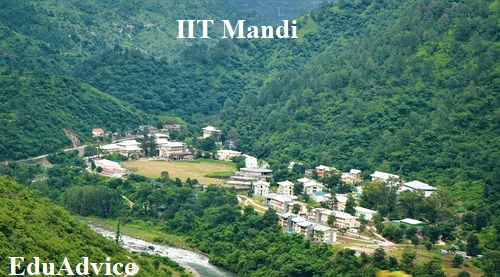
Mandi: IIT Mandi researchers work towards developing sustainable techniques for soil stabilization using a harmless-bacteria called S. Pasteurii that hydrolyse urea to precipitate calcite. The process does not involve hazardous chemicals and natural resources can be used sustainably.
The findings of the research team have been recently published in the journal ‘Geotechnical and Geo-environmental Engineering of the American Society of Civil Engineers (ASCE)’. The research was led by Dr. Kala Venkata Uday, and co-authored by his MS scholar, Mr. Deepak Mori.
Soil stabilization is the process of conferring long-term permanent strength to the soil by artificial means. It is used when construction work must be carried out on unstable grounds or to protect soil from erosion. Traditionally, mechanical processes such as compression and chemical processes such as the injection of chemical grout fluids into the soil are used for soil stabilization
In the past decades, an eco-friendly and sustainable soil stabilization technique – Microbial Induced Calcite Precipitation (MICP) – is being investigated worldwide. In this method, bacteria are used to produce calcium carbonate (calcite) within soil pores, which cements the individual grains together, thereby enhancing the soil/ground strength.
The researchers used a harmless-bacteria called S. Pasteurii that hydrolyse urea to precipitate calcite. The use of urea is particularly attractive because it does not involve hazardous chemicals and natural resources can be used sustainably. Their experimental setup consisted of a column of sand through which was percolated a mixture of the bacteria and cementing solution comprising urea, calcium chloride, nutrient broth, etc.
Since there were numerous parameters involved, researchers used the Taguchi method to analyse the effects of these various parameters on the strength enhancement of soil by MICP. This method involves the use of orthogonal arrays to organize the parameters affecting any process and the levels at which they should be varied. The Taguchi method enables the analysis of many influential parameters without the corresponding need for many experiments.
The researchers found that the amount of calcite formed is not as important as the size and location of the calcite grains formed in the pores during the process.
The higher cementing solution concentration resulted in higher strength improvement. Similarly, the flow rate and the supply rate of the cementing solution also affected the enhancement of strength. There was an optimum value for these parameters that produced maximum calcite deposition and thereby best strength enhancement.
Click Here for More Science & Technology
